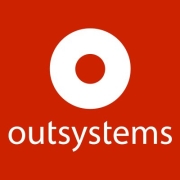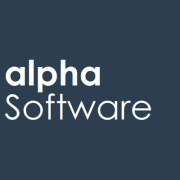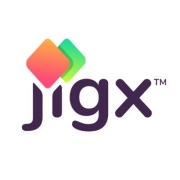Low-Code Development Platforms enable experienced developers and business users to design, build, and deploy applications with minimal hand-coding. These platforms streamline app creation, reducing time to market and enhancing collaboration.
Low-Code Development Platforms are becoming integral in IT environments, offering tools that simplify app development through pre-built templates, integrations, and intuitive interfaces. These platforms allow organizations to quickly adapt to market demands while maintaining control over their applications. Users appreciate the accelerated development cycles and the flexibility to customize applications without deep coding skills. The platforms support a wide range of business needs, from automating processes to customer engagement solutions.
What are the key features of Low-Code Development Platforms?In the banking sector, Low-Code Platforms are employed to create customer-facing applications and internal process tools quickly. Retailers use these platforms to develop custom engagement tools for sales and marketing campaigns. Manufacturing industries benefit by streamlining supply chain operations and integrating IoT for improved efficiency.
Low-Code Development Platforms empower organizations by democratizing application development. Companies can innovate faster and respond to changes with adaptable tools that accommodate both technical and business-focused team members.

























































































Savings! Low-code development saves both time and money. The bulk of the work is already done for you. You start with a concept, create your desired flowchart, and the low-code development process takes over from there. Using existing templates, low-code development delivers a usable finished product in minutes, rather than months. There is no longer a need for a team of developers to create code or to maintain processes and security. The hard work is already done and made simple for you.
Low-code development also gives you a great level of control over your business flow concept. You are in the driver’s seat, and can interpret your concept, course-correct, and have greater control over precisely how your workflow will function throughout the entire process. There is no more back-and-forth with a team of developers. It is your design and your process, from start to finish.
The basic answer is control.
Low-code leaves some wiggle room and the opportunity to make adjustments to better suit your desired outcomes. As mentioned above, low-code may potentially require some coding expertise to get your application to satisfy all your chosen outcomes. All of this can still be done in an extremely accelerated time frame, getting you from concept to finished application in minutes as opposed to hours, days, or even months.
No-code, although offering faster options and overall simplicity, does not allow for changes or tweaks to the processes and configurations. In a no-code environment, you will find a selection of predesigned basic templates created to satisfy numerous, general business needs. As no changes are permitted, there is no need for additional coding work to be done. If you are looking for an application that can fit into a basic pre-set template, then no-code may be the right choice for you.
Low-code and BPM are the same but different. BPM, or Business Process Management, is pretty “old school”. BPM is simply managing a business through thought and processes, troubleshooting, idea exchange, etc. Essentially, low-code begins with a finished, fine-tuned BPM and gets to work creating an application to meet your specifications. More and more, you will see the two terms together in combinations such as “low-code BPM.” Low-code works best when coupled with a brilliantly-executed business process.
A low-code development platform is a developmental environment used to create applications through defined pre-set selections rather than extensive time-consuming hand-coding. A low-code development platform offers an array of choices to initialize the framework of your desired application.
Once you have decided that low-code development is right for you, you need to choose a platform. The marketplace for low-code development platforms has a plethora of diverse selections to choose from. To make the right choice and find the best match, you should have a solid understanding of your business needs, desires, and goals. Is your business small, medium, or large? How many users need to have access to the platform? Do you want cloud-based or web-based? Which interfaces are you working with - IOS, Android, Windows, Linux, or all of these? What is your budget? These are just a few of the things to consider when choosing the right platform.
There is a platform that will fit your business needs, and many even offer free trials. It is advantageous to use the free trial period offered to give the platform a test drive and see if it is truly the best fit for you and your organization.
Low-code and no-code development is where tech is now and will be for the foreseeable future. So many applications use the same basic code components, making the need for hand coding somewhat redundant. Low-code / no-code platforms are akin to superhighways offering a direct route to where business wants to go and can get you there easier and faster than ever before, saving you time and money and giving you greater opportunities for growth and success.
Low-Code Development Platforms offer a significant boost in business agility by allowing you to build applications quickly without the need for extensive coding skills. This enables rapid prototyping and iteration, empowering you to respond swiftly to market changes and customer feedback. As a result, your business can pivot effectively while reducing time-to-market, enhancing your competitive edge in the dynamic business environment.
Are Low-Code Development Platforms secure for organizational use?Security is a top priority with Low-Code Development Platforms, and most provide robust security features out of the box. You may find features like role-based access control, data encryption, and regular security patches. When integrated into your development workflow, these platforms ensure your applications comply with industry standards and regulations, making them secure for organizational use while protecting sensitive data.
Can Low-Code Development Platforms support complex integrations?Low-Code Development Platforms excel at handling complex integrations with existing systems. Many platforms come with pre-built connectors and APIs that allow seamless communication between applications. This reduces the complexity typically associated with custom integrations, helping you leverage existing IT infrastructure and expand it with minimal disruption, making digital transformation initiatives smoother.
What are the cost benefits of using Low-Code Development Platforms?Using Low-Code Development Platforms offers substantial cost savings due to reduced development time and resource requirements. You can develop applications in-house without relying heavily on IT experts, lowering the need for extensive coding and specialized manpower. This shift not only cuts development costs but also decreases maintenance expenses, allowing your organization to allocate resources more efficiently to strategic initiatives.
How do Low-Code Development Platforms enhance collaboration between business and IT teams?Low-Code Development Platforms bridge the gap between business and IT teams by providing a visual development approach that aligns technical and non-technical stakeholders. You can engage more directly with IT teams in the development process, offering feedback and adjustments in real-time. This enhances mutual understanding and collaboration, leading to software solutions that better meet business needs and improve overall project outcomes.